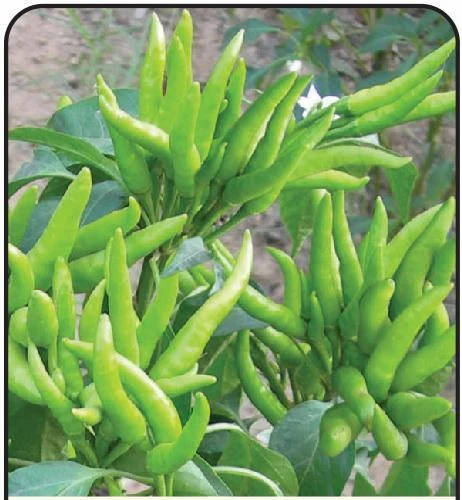Surajmukhi Cluster Chilli
Quantity: 50seeds+ Surajmukhi chili, also known as Sunflower chili, is a popular variety of chili pepper grown in India, particularly in the state of Andhra Pradesh. It is named for its resemblance to the sunflower, both in appearance and in the arrangement of its fruits on the plant.
35 in stock
Surajmukhi chili, also known as Sunflower chili, is a popular variety of chili pepper grown in India, particularly in the state of Andhra Pradesh. It is named for its resemblance to the sunflower, both in appearance and in the arrangement of its fruits on the plant. Here’s a detailed overview of Surajmukhi chili:
Characteristics Appearance: Surajmukhi chilies are small to medium-sized and often have a distinctive curved shape, resembling the petals of a sunflower. They typically grow to about 5-7 cm in length.
Color: The chilies can range from light green when immature to bright red when fully ripe.
Flavor: Surajmukhi chilies have a medium heat level with a slightly fruity and tangy flavor.
Texture: The skin is thin and smooth, making it suitable for both fresh consumption and drying
. Climate and Soil Requirements Climate: Surajmukhi chilies thrive in warm, tropical climates. They require temperatures between 20°C and 30°C for optimal growth.
Soil: They prefer well-drained, fertile loamy soil with a pH between 6.0 and 7.0. The soil should be rich in organic matter to support healthy growth. Planting Season: Surajmukhi chilies are typically planted at the beginning of the warm season, usually in early spring (February to March) or post-monsoon (August to September).
Seed Sowing: Seeds are started in nurseries and transplanted to the field when seedlings are 4-6 weeks old.
Spacing: Space plants 30-45 cm apart with rows 45-60 cm apart to allow for adequate growth and air circulation.
Land Preparation Plowing: Prepare the land by plowing thoroughly to create a fine tilth. Incorporate well-rotted compost or manure to improve soil fertility.
Bed Preparation: Raised beds can help improve drainage and prevent waterlogging.
Irrigation Watering: Regular and consistent watering is essential, especially during flowering and fruiting stages. The soil should be kept consistently moist but not waterlogged.
Frequency: Irrigate every 5-7 days, adjusting based on soil moisture levels and weather conditions.
| Weight | 6 g |
|---|









Reviews
There are no reviews yet.